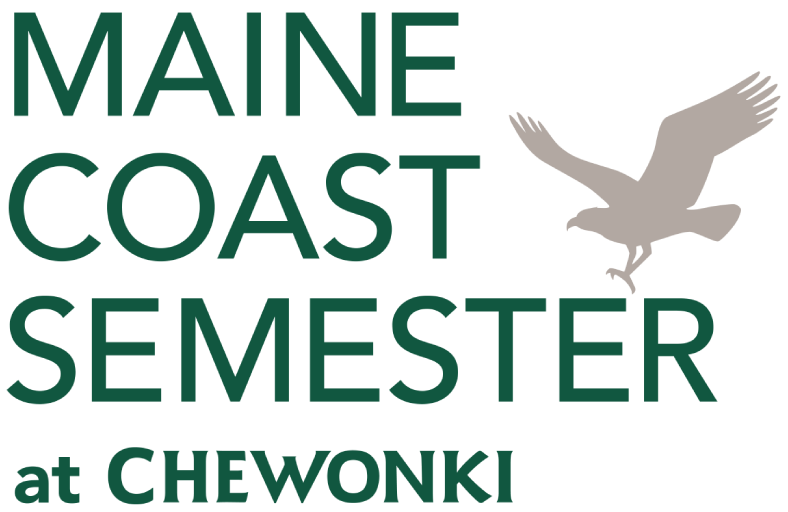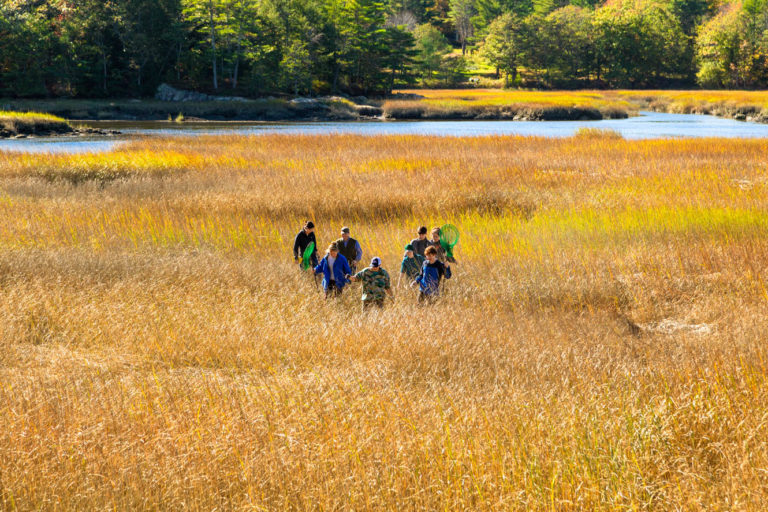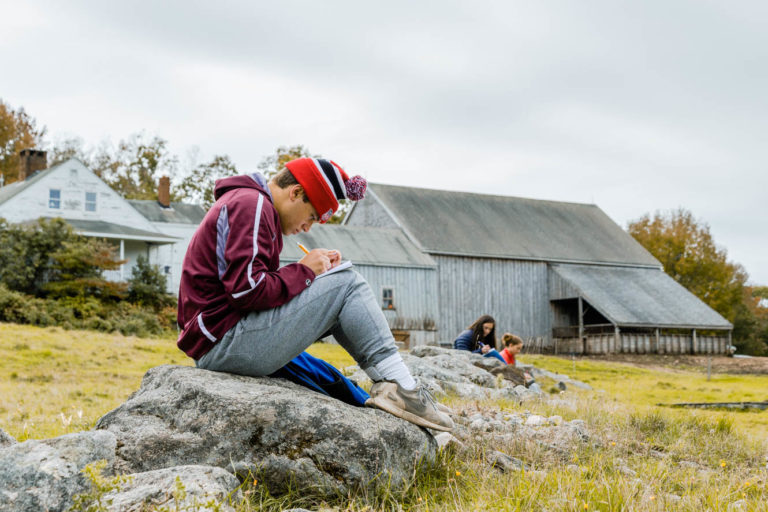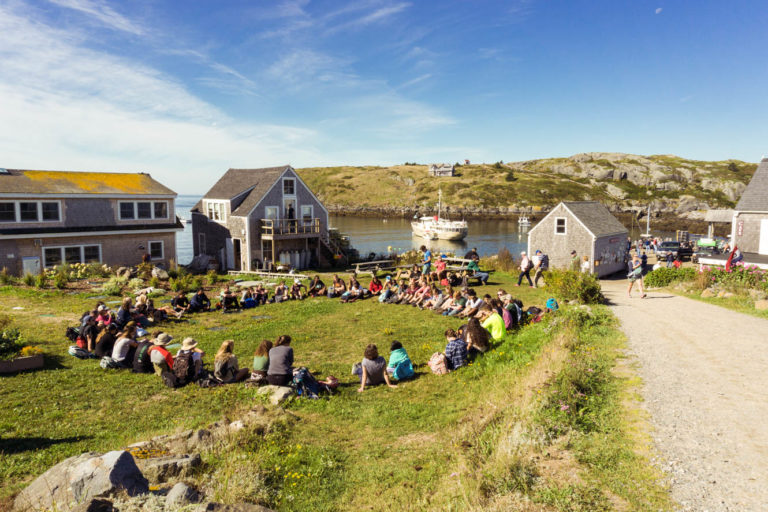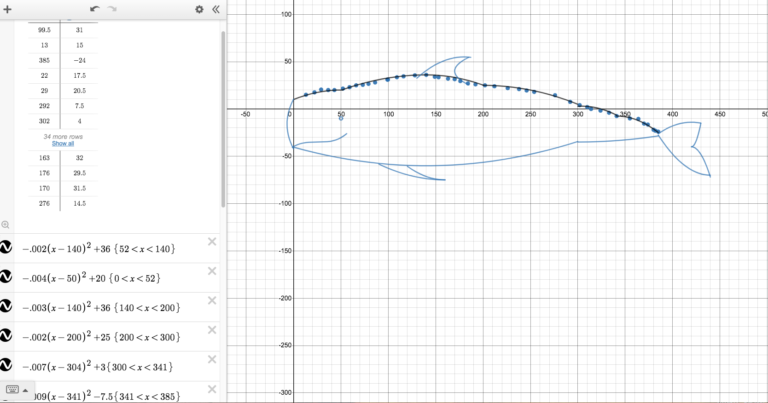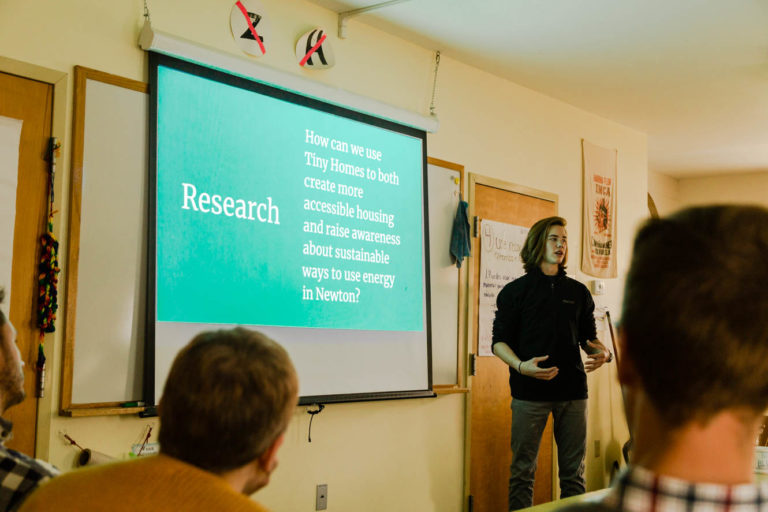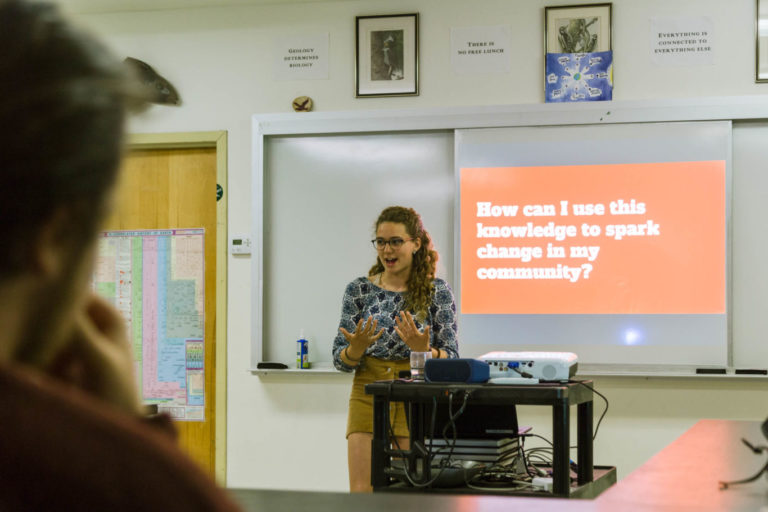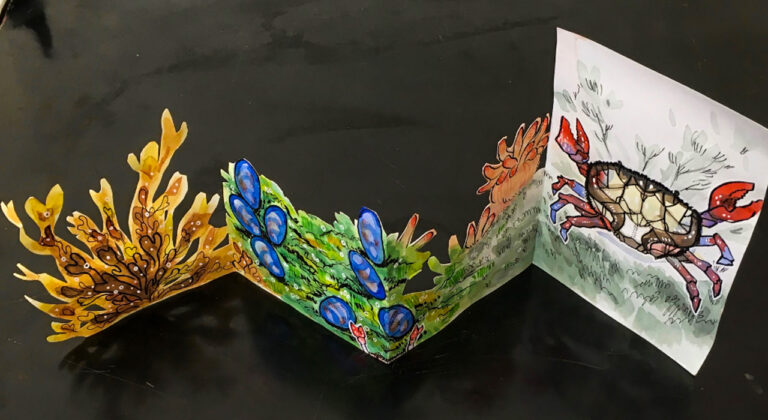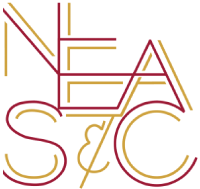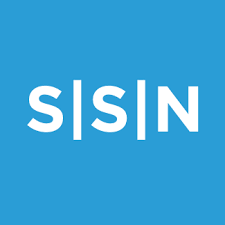Studio Art at Maine Coast Semester
Students of all levels have the opportunity to learn habits of creative expression while mastering fundamental skills and techniques. As a result, while exploring their sense of self and sense of place, they gain an increased sense of confidence in expressing ideas visually and develop a deeper awareness of how artists work.
Art and the Natural World (H)
Elective, Prerequisites: None
How can art connect and engage with the natural world? What are the relationships between materials, artists, audiences, places and time? How might artistic practices offer tools for better understanding relationships to environments, ourselves, each other/communities, non-humans, and our own agency in creating change?
In this course, students inquire into these questions through personal and collaborative place-based art projects. This course emphasizes the creative process, in which students learn to take risks, problem solve, explore new media in a collaborative environment, and practice elements from the eight “studio habits of mind”—develop craft, engage and persist, envision, express, observe, reflect, stretch and explore, and understand the art worlds (Harvard University’s Project Zero). Students are expected to complete weekly homework assignments and participate in class discussions, critiques, and presentations, and keep a sketchbook. When projects are finished, a written artist statement, critique, and/or presentation provide reflection, critical analysis and closure. Students are assessed on the quality of their art-making process and their finished artwork as it communicates their ideas, as well as effort and participation in class.
Artists in this course explore a variety of media such as natural clay, printmaking, mixed-media, fiber, and site-specific installation, as well as collaborative art exercises. In addition to viewing artists’ work that relates to each project, local artists are invited to visit, show their work, and answer questions.
This course is inclusive of all, whether a beginner or quite advanced artist. Each student comes with a different set of skills, knowledge, and experiences in art and in life; no matter where they are, they have much to offer the learning community in the art studio. While beginners develop foundational skills, those with more experience are offered added challenges; all develop independent final projects.
